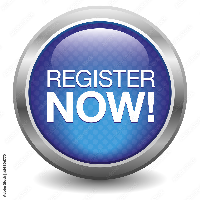Renowned Speakers

M.V.Raghavendra Rao
Professor and Dean (Students Affairs) Avalon University School of Medicine Netherlands
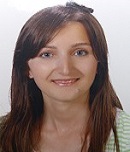
Suzan SIRINTURK
Ege University Faculty of Medicine, Turkey

A.Y. Arkhipov
Institute of Higher Nervous Activity and Neurophysiology, Moscow Russia
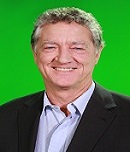
Geoffrey T. Meyer
School of Anatomy, Physiology and Human Biology The University of Western Australia Australia
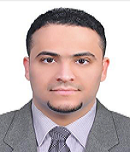
Adil R. Sarhan
School of Biosciences, University of Birmingham, Birmingham UK
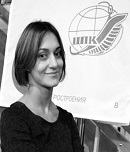
Nesterovich T.B.
Moscow Aviation Institute (National Research University),Moscow Russia

Timothée JACQUESSON
Department of Anatomy, University of Lyon France
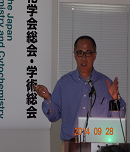
Xuesong Yang
Jinan University, Guangzhou China
Recommended Global Medical Webinars & Conferences
Europe & UK
Asia Pacific & Middle East
Anatomy and Physiology 2022
About conference
Conference Series Ltd invites all the participants from all over the world to attend ‘’3rd International Conference on Anatomy and Physiology’’
During December 29-30, 2022, in Montreal, Canada which includes Eminent Speakers, Researchers, Scientists, CEO’s , Young Research fellows across the world.
Anatomy and Physiology 2022 will bring together world-class scientists, biologists, super specialist, researchers and academicians to discuss about researches in anatomy and physiology. The main theme of the conference is Advancement in the teaching and research in the field of Anatomy and Physiology. The International symposiums, B2B meetings, international workshops will also be organized to discuss the specific topics in the field of Anatomy & Physiology. Anatomy and Physiology study is concerned with the structure and relationship between body parts and the function of body parts and the body. The conference also welcomes International exhibitions form corporate sectors to showcase the recent advancements in the Anatomy & Physiology. OMICS International organizes a conference series of 1000+ Global Events inclusive of 300+ Conferences, 500+ Upcoming and Previous Symposiums and Workshops in USA, Europe & Asia with support from 1000 more scientific societies and publishes 700+ Open access journals which contains over 30000 eminent personalities, reputed scientists as editorial board members.
Why to attend??
With members from around the world focused on learning about human anatomy and physiology and its advances; this is the best opportunity to reach the largest assemblage of participants from the human anatomy and physiology community. Conduct presentations, distribute information, meet with current and potential scientists, make a splash with new drug developments, and receive name recognition at this 3-day event. World-renowned speakers, the most recent techniques, developments, and the newest updates in anatomy and physiology are hallmarks of this conference.
Sessions/ Tracks
Conference Series Ltd. invites all the participants across the globe to attend International Conference on Anatomy & Physiology during December 29-30, 2022 at Montreal, Canada which includes prompt keynote presentations, Oral talks, Poster presentations, Exhibitions and much more.
Anatomy and Physiology 2022 Conference will bring together world-class scientists, biologists, super specialist, researchers and academicians to discuss about anatomy & physiology. This conference will be covering essential topics like organ science and homeostasis, human anatomy and ergonomics, latest innovations in embryology research, experimental physiology and pathophysiology, human consciousness, exercise physiology and physiotherapy, human immunity and physiology, various biological systems, histology and cytology, biomechanics and biomedical implants, physiological psychology, physiology of respiratory system, eye, ear, nose and much more.
Anatomy is the scientific study of the structure of organisms including their systems, organs and tissues. Ergonomics is the scientific discipline concerned with the understanding of interactions among humans and other elements of a system, and the profession that applies theory, principles, data and methods to design in order to optimize human well-being and overall system performance.
Cytology is a branch of Life Science that deals with the structure, functioning and the Chemistry of ‘Cell’, a basic unit of the living organism. Histology is the study of microscopic anatomy of cells and tissues of living organism.
The human skeleton is the internal framework of the body. It is composed of 270 bones at birth – this total decreases to 206 bones by adulthood after some bones have fused together. The bone mass in the skeleton reaches maximum density around age 30. The human skeleton can be divided into the axial skeleton and the appendicular skeleton. The axial skeleton is formed by the vertebral column, the rib cage, the skull and other associated bones. The appendicular skeleton, which is attached to the axial skeleton, is formed by the pectoral girdle, the pelvic girdle and the bones of the upper and lower limbs. The human skeleton serves six major functions; support, movement, protection, production of blood cells, storage of ions and endocrine regulation.
The human musculoskeletal system (also known as the locomotors system, and previously the activity system) is an organ system that gives humans the ability to move using their muscular and skeletal systems. The musculoskeletal system provides form, support, stability, and movement to the body. It is made up of the bones of the skeleton, muscles, cartilage, tendons, ligaments, joints and other connective tissue that supports and binds tissues and organs together. The musculoskeletal system's primary functions include supporting the body, allowing motion, and protecting vital organs. The skeletal portion of the system serves as the main storage system for calcium and phosphorus and contains critical components of the hematopoietic system.
Organ science and Hematologic system
Homeostasis is the process by which the body regulates its internal environment for chemical and biological processes to occur. Some of the more important variables that need to be controlled include temperature, and the levels of blood sugar, oxygen and carbon dioxide. A number of organs are involved in homeostasis, and these include the lungs, pancreas, kidneys and skin.
Dental: Anatomy and Physiology
The major structures that are found in and around the oral cavity include the lips, cheeks, tongue, hard palate, soft palate, teeth, gums, salivary glands and the upper and lower jaws. Maintaining the teeth in a state of health is of utmost importance for complete digestion and nutrition. Not only do the teeth serve several functions in the chewing process, but they also affect our speech and appearance. This conference is looking forward to discuss innovative exploration in dental anatomy and physiology.
Anatomy and Physiology of Heart and Lungs
The Respiratory System is crucial to every being. Without it, we would cease to live outside of the womb. Let us begin by taking a look at the structure of the respiratory system and how vital it is to life. During inhalation or exhalation air is pulled towards or away from the lungs, by several cavities, tubes, and openings. The organs of the respiratory system make sure that oxygen enters our bodies and carbon dioxide leaves our bodies. The respiratory tract is the path of air from the nose to the lungs. It is divided into two sections: Upper Respiratory Tract and the Lower Respiratory Tract. Included in the upper respiratory tract are the Nostrils, Nasal Cavities, Pharynx, Epiglottis, and the Larynx. The lower respiratory tract consists of the Trachea, Bronchi, Bronchioles, and the Lungs.
The circulatory system, also called the cardiovascular system or the vascular system, is an organ system that permits blood to circulate and transport nutrients (such as amino acids and electrolytes), oxygen, carbon dioxide, hormones, and blood cells to and from the cells in the body to provide nourishment and help in fighting diseases, stabilize temperature and pH, and maintain homeostasis. The study of the blood flow is called hemodynamic. The study of the properties of the blood flow is called hem rheology.
The immune system is a complex system that is responsible for protecting us against infections and foreign substances. There are three lines of defense: the first is to keep invaders out, the second line of defense consists of non-specific ways to defend against pathogens that have broken through the first line of defense. The third line of defense is mounted against specific pathogens that are causing disease. The immune system is closely tied to the lymphatic system, with B and T lymphocytes being found primarily within lymph nodes. Tonsils and the thymus gland are also considered lymph organs and are involved in immunity. We often don't realize how effective the immune system is until it fails or malfunctions, such as when the lymphocytes are attacked by HIV in an AIDS patient.
Latest innovations in embryology pregnancy research
Embryology is the study of the development of an embryo. An embryo is defined as any organism in an early stage well before birth.
Physiological Psychology & Neuro-biology
Physiological psychology is a subdivision of behavioral neuroscience that studies the neural mechanisms of perception and behavior through direct manipulation of the brains. This field of psychology takes an empirical and practical approach when studying the brain and behavior. Most scientists in this field believe that the mind is a phenomenon that stems from the nervous system. By studying and gaining knowledge about the mechanisms of the nervous system, physiological psychologists can uncover many truths about behavior. Unlike other subdivisions within biological psychology, the main focus of physiological psychological research is the development of theories that describe brain-behavior relationships.
Exercise Physiology and Physiotherapy
Exercise Physiology is the new and growing area of allied health whereas physiotherapy is a long established profession. At some point in our lives the majority of us have seen a physiotherapist for treatment, more than likely lower back pain.
So how do an Exercise Physiologist and Physiotherapist differ!!!
Energy Systems & Sports Physiology
Energy is required for all kinds of bodily processes including growth and development, repair, the transport of various substances between cells and of course, muscle contraction. Several energy sources or substrates are available which can be used to power the production of ATP. One of these substrates, like existing ATP, is stored inside the cell and is called creatine phosphate.
This conference will focus on understanding energy systems underpins the study of exercise and the effect it has on the human body.
The integumentary system is the organ system that protects the body from various kinds of damage, such as loss of water or abrasion from outside. The system comprises the skin and its appendages (including hair, scales, feathers, hooves, and nails). The integumentary system has a variety of functions; it may serve to waterproof, cushion, and protect the deeper tissues, excrete wastes, and regulate temperature, and is the attachment site for sensory receptors to detect pain, sensation, pressure, and temperature. In most terrestrial vertebrates with significant exposure to sunlight, the integumentary system also provides for vitamin D synthesis.
Anatomy and Physiology of other various Biological systems
A biological system is a complex network of biologically relevant entities. As biological organization spans several scales, examples of biological systems are populations of organisms, or on the organ- and tissue scale in human, the circulatory system, the respiratory system, the nervous system, etc.
On the micro- to the Nano scope scale, examples of biological systems are cells, organelles, macromolecular complexes and regulatory pathways.
Experimental Physiology and Pathophysiology
Pathophysiology or physiopathology is a convergence of pathology with physiology. Pathology is the medical discipline that describes conditions typically observed during a disease state, whereas physiology is the biological discipline that describes processes or mechanisms operating within an organism. Pathology describes the abnormal or undesired condition, whereupon pathophysiology seeks to explain the physiological processes or mechanisms whereby such condition develops and progresses.
Anatomy and Physiology of Cancer
Cancer is the uncontrolled growth of abnormal cells in the body. In the body, there are trillions of cells with various functions. These cells grow and divide to help the body function properly. Cells die when they become old or damaged, and new cells replace them.
Cancer develops when the body’s normal control mechanism stops working. Old cells do not die and cells grow out of control, forming new, abnormal cells. These extra cells may form a mass of tissue, called a tumor. Some cancers, such as leukemia, do not form tumors.
Cancer has a complex Pathophysiology. Pathologists are physicians who are concerned primarily with the study of disease in all its aspects. This includes cause of the disease, diagnosis, how the disease develops (pathogenesis), mechanism and natural course of the disease. They also deal with biochemical features, progression, and prognosis or outcome of the disease.
Biomechanics and Biomedical implants
The Biomechanics & Implants program includes basic and applied research in the broad field of joints, soft tissues, bones and implants. An implant is a medical device manufactured to replace a missing biological structure, support a damaged biological structure, or enhance an existing biological structure. Medical implants are man-made devices, in contrast to a transplant, which is a transplanted biomedical tissue. The surface of implants that contact the body might be made of a biomedical material such as titanium, silicone or apatite depending on what is the most functional. In some cases implants contain electronics e.g. artificial pacemaker and cochlear implants. Some implants are bioactive, such as subcutaneous drug delivery devices in the form of implantable pills or drug-eluting stents.
It is the branch of anatomy to determine, examine and identifying preserved parts of the body remains to identify the cause of death, age, genetic population, sex etc. it is mostly used for solving the crime scenes. The human body incorporates the whole structure of a person and contains a head, neck, trunk (which incorporates the thorax and guts), arms and hands, legs and feet. All aspects of the body is made out of different sorts of cells, the basic unit of life.
Anatomy and Physiology of Nose and Ear
The visible part of the human nose is the protruding part of the face that bears the nostrils. The shape of the nose is determined by the ethnocide bone and the nasal septum, which consists mostly of cartilage and which separates the nostrils. On average the nose of a male is larger than that of a female. The nasal root is the top of the nose, forming an indentation at the suture where the nasal bones meet the frontal bone. The anterior nasal spine is the thin projection of bone at the midline on the lower nasal margin, holding the cartilaginous center of the nose. Adult humans have nasal hairs in the anterior nasal passage.
Anatomy and Physiology of Human eye
The human eye is an organ that reacts to light and has several purposes. As a sense organ, the mammalian eye allows vision. Rod and cone cells in the retina allow conscious light perception and vision including color differentiation and the perception of depth. The human eye can distinguish about 10 million colors. Similar to the eyes of other mammals, the human eye's non-image-forming photosensitive ganglion cells in the retina receive light signals which affect adjustment of the size of the pupil, regulation and suppression of the hormone melatonin and entrainment of the body clock.
Market Analysis
Summary: Anatomy and Physiology 2022 welcomes attendees, presenters, and exhibitors from all over the world to Birmingham, UK. We are delighted to invite you all to attend and register for the “3rd world Conference on Anatomy and Physiology” which is going to be held during December 29-30, 2022 Canada. The organizing committee is gearing up for an exciting and informative conference program including plenary lectures, symposia, workshops on a variety of topics, poster presentations and various programs for participants from all over the world. We invite you to join us at the Anatomy and Physiology 2022 where you will be sure to have a meaningful experience with scholars from around the world. All the members of Anatomy and Physiology 2022 organizing committee look forward to meet you at Toronto Canada
For more details please visit- https://anatomy-physiology.conferenceseries.com/
Importance and Scope: The scope of human anatomy and physiology is to inquire into fascinating complexity of human body. It gives a gateway to careers in health related fields viz. mass therapy and athletics training as a foundation to advanced scientific studies. More researches on anatomy and physiology is needed for understanding pathology of disease and pathological changes, for determining techniques of surgeries, to know parameters of normal health, factors affecting various physiological processes and its effects and moreover overall effective maintenance of individual and community health .The Principles of Anatomy and Physiology conference is to meet the existing requirements of introductory anatomy and Physiology courses. It also gives values, simplicity, direction and sort of power to the learners. Human Anatomy and Physiology is formidable body of knowledge to present in an introductory course and mastering subject. It is needed to understand how individual structures are related to the composition of entire body. The anatomy and physiology helps in the application of knowledge of structure of human body for prevention, diagnosis and prognosis of disorder.
Conference Highlights:
• Human Anatomy and Ergonomics
• Organ science and Homeostasis
• Histology and Cytology
• Latest innovations in embryology research
• Biomechanics and Biomedical implants
• Experimental Physiology and Pathophysiology
• Physiological Psychology
• Exercise Physiology and Physiotherapy
• Human Immunity and Physiology
• Physiology of Respiratory system
• Various Biological systems
Association and Societies around the world
International societies and association
• International Behavioral Neuroscience Society
• International Behavioral and Neural Genetics Society
• International Council for Science
• International Association of Medical Colleges
• International Mammalian Genome Society
• International Union of Microbiological Societies
• International brain research organization
• International Society for Developmental Neuroscience
• International Society for Endocrinology
To Collaborate Scientific Professionals around the World
Conference Date December 08-09, 2022
For Sponsors & Exhibitors
Speaker Opportunity
Useful Links
Past Conference Report
Supported By
All accepted abstracts will be published in respective Conference Series International Journals.
Abstracts will be provided with Digital Object Identifier by
